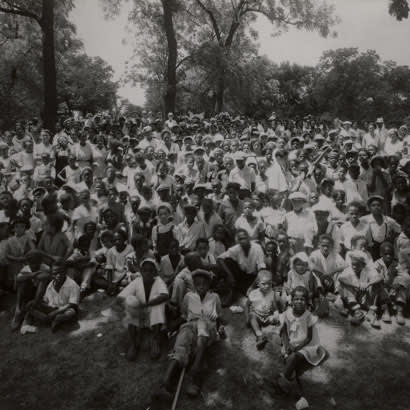
Using the power of storytelling to engage new park users
Increasing diversity and inclusion on public lands has never been more important than it is today. The upcoming generation — the most diverse generation in U.S. history — will determine the future of our nation’s public lands and waters. If that generation does not feel connected to public lands, then it won’t cherish and protect them in the ways previous generations have. This lack of connection is particularly evident in communities of color, which have much lower rates of engagement with public lands.
As the stewards of local urban greenspaces, forests and natural areas, local parks offer unique, place-based opportunities to investigate and connect with nature in locations that are close to home and do not require a large amount of time or money to enjoy. Because of these factors, local parks are well-positioned to create a new generation of culturally relevant parks and to engage new audiences.
What Is a Culturally Relevant Park?
“Cultural Relevancy” is a phrase that’s being used more and more in regard to public lands. The term was first coined in the early 1990s by Dr. Gloria Ladson-Billings, an American pedagogical theorist and teacher/educator, who used it to describe a new way of “culturally relevant” teaching defined as a way of teaching students in which they (a) experience academic success; (b) develop and/or maintain cultural competence; and (c) develop a critical consciousness. Dr. Billings found that integrating cultural awareness into the classroom allowed students to relate course content to their cultural context and, in turn, better understand what was being taught.
A park or park agency is considered culturally relevant, if “what” it does and “how” it does it is relevant to diverse audiences. The “what” can encompass programming, advocacy, curriculum or any of the substantive mission-driven pieces of an agency’s work. The “how” is its approach to the work, who it involves in its efforts, the language it uses, its partnerships and its messaging. In other words, cultural relevance in parks is achieved when all Americans can establish a personal connection to the park and/or park programs, and find meaning and value in the experience because it relates to them in a way that helps them better understand what is being offered.
How Does This Relate to Public Lands?
In an article, titled “Public Lands Should Be Challenged with Equity of Access for All,” in the January 2017 issue of The Hill, Jose Gonzalez, founder of Latino Outdoors, is quoted as saying: “We need to explore what the ideas of wilderness, protected spaces, and open spaces mean to diverse communities.” There are many notable examples of parks using storytelling to engage new audiences, but one example that is particularly relevant comes from the Kansas City Parks and Recreation, which used a unique place-based story to engage new audiences.
Watermelon Hill
Swope Park, a 1,805-acre park in Kansas City, Missouri — the city’s largest park and one of the largest urban parks in the United States — was segregated until the mid-1950s. Prior to desegregation, only one picnic shelter, a spot called “Watermelon Hill,” was available to African-Americans visiting the park. The late Joelouis Mattox, a local historian and former columnist, helped bring the history of Watermelon Hill to light in a lecture he presented at a local community center about the history of Watermelon Hill in Swope Park.
“When I moved to Kansas City,” Mattox says, “Swope Park was already open to everyone and free of segregation. But, Watermelon Hill still existed. Everyone felt comfortable there. Church groups and other organizations would have their picnics there. Families would go there. Black people created that name for Shelter No. 5 because people in our community who did use the shelter [would] bring watermelons with them when they had picnics in the park.” Fifty-pound ice blocks in washtubs kept the melons cold. And, there were watermelon-eating contests. Watermelon Hill was a “get-away place” for the black community.
When researching the story of the segregated shelter for his lecture, Mattox discovered that black men and women older than about 50 knew exactly what he was talking about. Most new residents, however, had never even heard of it.
Kansas City Parks decided to embrace the history of Watermelon Hill and host a community-engagement event, designed to educate newer residents about local African-American history. The department took the unflattering history of segregation at Swope Park and used that story to engage new audiences by making the park culturally and historically relevant to a wider range of audiences. Using the story of Watermelon Hill as the focus of the event allowed participants to relate the educational content being offered by the parks department to their unique cultural context.
Today, Watermelon Hill is known as a mythical place that connects the past to the present. Other park and rec departments can use this example to share their own stories to engage new park attendees and increase diversity and inclusion on public lands.
Roland Richardson is NRPA’s Conservation Program Manager.

